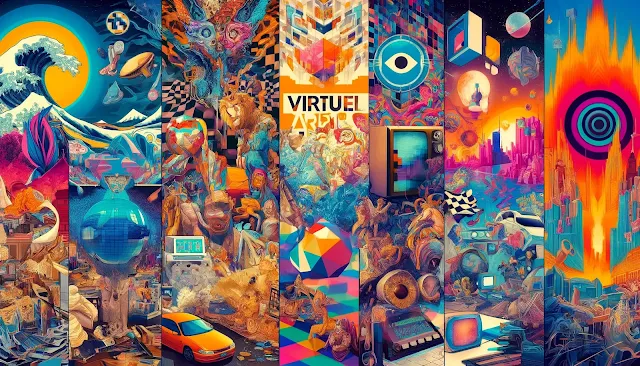Explore Topics and Movements
Altermodern
Virtual Art & Video Game Art
Excessivism
Metamodernism
Kitsch Movement
Pseudorealism
Cynical Realism
Classical Realism
- Classical Realism: A Timeless Bridge Between Art and Reality
- Jean-Léon Gérôme - The Death of Caesar: The Master of Classical Realism
- Jeremy Lipking: The Modern Master of Classical Realism
- Juliette Aristides: The Keeper of Classical Realism
- William Paxton: The Master of Classical Realism
- Jacob Collins: Reviving Classical Realism in a Modern Age
- Nelson Shanks: A Master of Classical Realism in a Modern World
- R.H. Ives Gammell: A Keeper of Tradition in a Modern World
Renewable Energy Sculpture
Stuckism
- Stuckism: A Radical Call for Authenticity in Art
- Billy Childish: The Relentless Visionary Behind Stuckism
- Charles Thomson: The Intellectual Architect Behind Stuckism
- Ella Guru: A Notable Stuckist Championing Vibrant, Narrative-Driven Art
- Paul Harvey: A Leading Stuckist and His Role in Defining the Movement’s Ethos
Street Art
- The Vibrant World of Graffiti and Street Art: A Celebration of Creativity and Community
- The Rise of Street Art: From Graffiti to Gallery
- Invader: The Pixel Pioneer Bringing Retro Video Game Art to Urban Landscapes
- Os Gemeos: The Magical Twins Transforming Urban Landscapes with Fantasy and Culture
- Vhils: The Wall Carver Exploring Identity and Urbanization
- Shepard Fairey: The Provocative Artist Blurring the Lines Between Activism and Art
- Swoon: The Intricate Storyteller of Urban Art
- Eduardo Kobra: The Brazilian Muralist Painting the World with Peace and Unity
- Keith Haring: The Vibrant Vanguard of Art and Social Activism
- Banksy: The Enigmatic Street Artist Who Continues to Captivate the World
- JR: The Visionary French Artist Transforming Public Spaces with Humanity and Social Commentary
Superflat
VJing
Resilience Art
Industrial Land Art
Thinkism Art
- Thinkism Art Movement
- The Lyrical Abstraction of Existence: Exploring "Start of Life" and "The Table of Creation"
- Inside "Metropolitan Gay Love": A Deep Dive into Art and Identity
- War Party
- Epilogue of War: A Canvas of Victory and Defeat
- Discovering Future
- My Universes in Meta-Universe - Just a Metaphysical Dream
- My Latest Painting: The Chinese Dog - Yulin Dog Meat Festival Celebration
- Antonino La Vela Art: Exploring the Vivid World of the "SSGR" Series
- Intricate Realities, A Journey Through Abstract Worlds
- The Thinkism Art Movement: David Kam
- Shane Townley: Championing Environmental Consciousness through Art
- Discovering the Harmony: The Meditative Geometric Abstractions of Fanny Sanín
- The Multifaceted Art of Otobong Nkanga: Exploring Land, Identity, and Memory



.jpg)






.jpg)
No comments:
Post a Comment